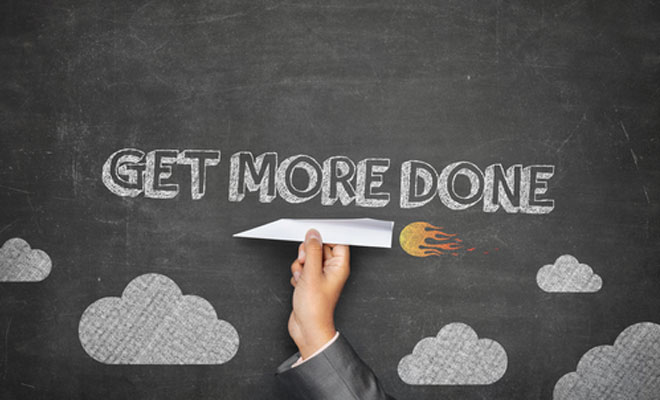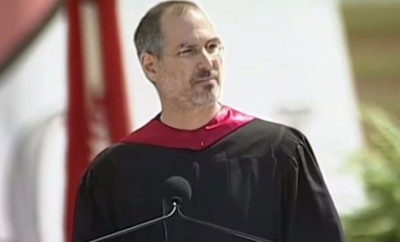
Stop Multitasking. You’ll Get More Work Done.
There never seem to be enough hours in the day to get our work done. That’s why many of us turn to multi-tasking, which represents our best, noble attempt to accomplish multiple tasks. But it turns out that multitasking may actually limit productivity and ultimately affect your level, and your health. According to athlete and international and TEDx speaker Katie Brauer, “Higher productivity happens when you limit multitasking and stay focused on completing a task at hand. Studies show that multitasking makes you 40 percent less productive and increases stress levels.”
Related: 5 Daily Habits That Will Increase Your Productivity Levels
While acknowledging the difficulty of focusing, especially at work, Brauer suggested that implementing a few simple steps in your workday can help you focus and make a dramatic difference in your rate of work output.
That got me thinking. So, I reached out to a few other entrepreneurs running health-related businesses for their take on ways to stay more engaged and productive during the business day.
One was business owner Danielle Dietz-LiVolsi, founder and president of NuttZo, a natural foods company. Dietz-LiVolsi told me that, for her, preparing for the start of the day is a great time to get focused. You can get focused when you avoid doing certain things first thing in the morning such as checking your cell phone, she said.
“Do not check your phone or email when you first wake up,” Dietz-LiVolsi said. “Wait at least 60 minutes, so you are not jumping right into a ‘reactive’ state of mind.” She said that she believes in easing into the day. She advises starting out by stretching, drinking a glass of lemon water and meditating. “You’ll notice a calmness and clarity while you do this,”she sad. “My favorite time is right after the kids go to school.
“Next, start your morning by creating a list of five people you need to email or call in the day. Start your day by working on calling/emailing five people. I reach my top five on my list by 10 a.m. It’s my most productive time of day.”
Email also looms large for Carson Tate, author of Work Simply. He suggested that we craft more efficient emails to be more productive. “If you ask yourself ‘who, what, when, where and how’ before you send, you will eliminate a lot of the back and forth,” he told me. A focused email will save time, Tate said, adding several tips for more productive email:
- Who? Break the email down into two sub-questions: Who needs to respond to, take action on or make a decision about this information? Put that name(s) on the “to” line. Then comes question two: Who needs to know this information? Put that name(s) on the “cc” line.
- Why? Look back at the names on two lines. For each name, ask yourself, Why is this person involved in the project? Why am I emailing him or her? Why does he/she need to know? Why does this information matter? Why does it matter to the broader organization?”
- What? Ask yourself a series of “what” questions to help shape the content of your email: What is the purpose of the email? What are the main points to be communicated in this email? What are the key facts? What references or research data needs to be included? What must everyone know? Do not hit the send button until you have included every piece of detail required.
- How? Ask yourself, How do I want recipients to respond? Describe this explicitly in your email. If there’s a deadline, say so. If you want an email response, say that. If you need suggested dates for a meeting, names of possible project participants, a list of questions or key ideas to be considered, or any other specific input, describe it. Never assume that people will understand what you want. Tell them as straightforwardly as possible.
Related: 16 Productivity Tools Useful for Every Entrepreneur
Finally, I turned to business owner Elisette Carlson, founder of Smack! Media, which represents health companies. Carlson described a unique way to reduce distraction in order to be more productive. “Pretend you’re on an airplane. There are no distractions on a plane, and there’s a time limit to get something done,” she said. “I sometimes try to simulate this environment in the office by putting my phone on ‘do not disturb’ and going offline.
“Try it for 60 to 90 minutes and you’ll be amazed at how much work you can get done,” Carlson said, adding that she sees value in shorter deadlines. “Cut calls in half: Do you really need 30 minutes to talk to your colleague or client? Prioritize and get to the point. Try giving yourself half or a third of the time to finish that presentation or story. If you’re not multitasking, you’ll get it done.”
These productivity tips share one thing in common: They push individuals to be more organized, mentally. Yoga Six owner Katie Brauer believes that in order to achieve higher productivity, it’s important to clear or reduce mental clutter. “The mind benefits from the combination of having structure and being clutter free,” Brauer said. “When it comes to raising your productivity level, try working on projects with your email and sound alert turned off.
“Keep a check list and schedule blocks of time for specific tasks.” Finally, Brauer suggested that a good first step to decluttering your mind is to take time off, go outside, unplug from mobile devices and be with family and friends.
First published at www.entrepreneur.com/
Image – depositphotos







